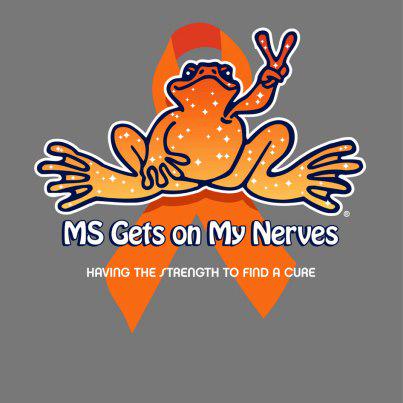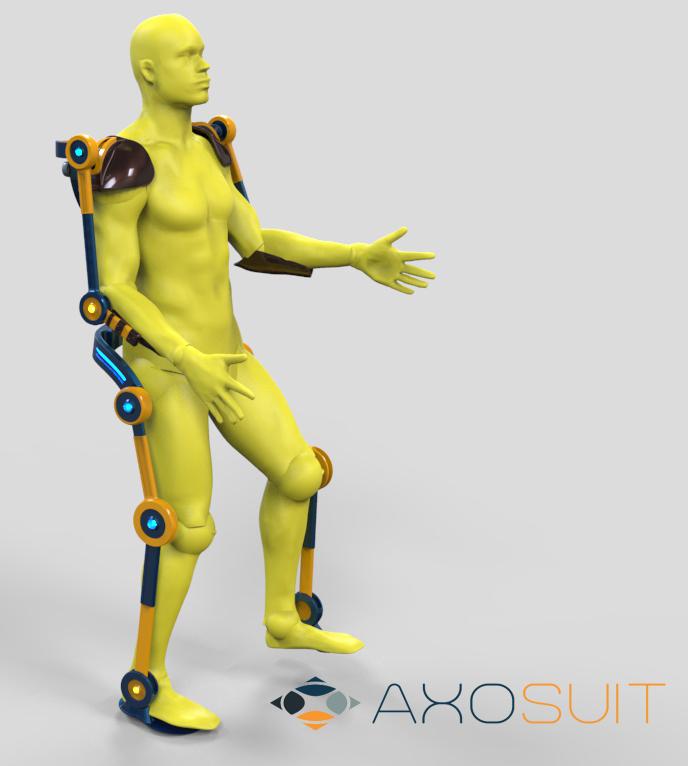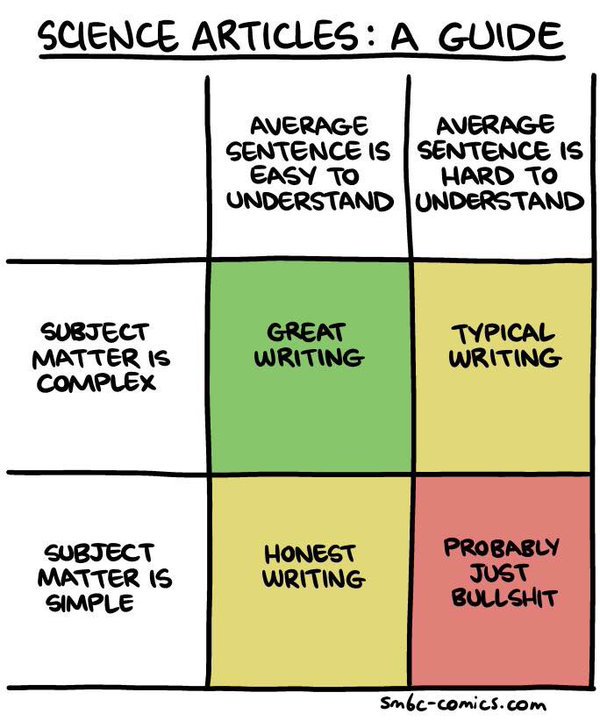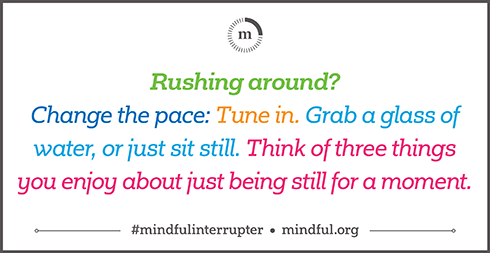
Stay Positive
- Alert Camus
Tuesday, October 27, 2015
Sunday, October 25, 2015
Saturday, October 24, 2015
Robot Skeletons keep elderly active
Friday, October 23, 2015
Habits Proven to Make You Happier
“You are good enough!” Self-acceptance is a key happy habit, yet it’s one people practise the least.
A
new survey of 5,000 people has found a strong link between
self-acceptance and happiness, despite the fact that it’s a habit not
frequently practised.
For their survey, they identified ten everyday habits which science has shown can make people happier.
Here are the 10 habits, with the average ratings of survey participants on a scale of 1-10, as to how often they performed each habit:
- Giving: do things for others — 7.41
- Relating: connect with people — 7.36
- Exercising: take care of your body — 5.88
- Appreciating: notice the world around — 6.57
- Trying out: keep learning new things — 6.26
- Direction: have goals to look forward to — 6.08
- Resilience: find ways to bounce back — 6.33
- Emotion: take a positive approach — 6.74
- Acceptance: be comfortable with who you are — 5.56
- Meaning: be part of something bigger — 6.38
(You’ll notice that the first letters spell out the words GREAT DREAM.)
The survey showed that one of the largest associations between these happy habits and reported happiness was for self-acceptance.
This category, though, got the lowest rating for people actually performing the habit, with an average of only 5.56.
Top of the list of happy habits that people performed was ‘giving’.
In this category, one in six reported a 10 out of 10; just over one-third scored an 8 or 9; slightly fewer scored 6 or 7; and less than one in six (15%) rated themselves at 5 or less.
One of the psychologists involved, Professor Karen Pine said:
“Practising these habits really can boost our happiness. It’s great to see so many people regularly doing things to help others — and when we make others happy we tend to feel good ourselves too.
This survey shows that practising self-acceptance is one thing that could make the biggest difference to many people’s happiness.
Exercise is also known to lift mood so if people want a simple, daily way to fee happier they should get into the habit of being more physically active too.”
Increase your self-acceptance
Here are three ways to boost your self-acceptance, as suggested by the researchers:
“1. Be as kind to yourself as you are to others. See your mistakes as opportunities to learn. Notice things you do well, however small.
2. Ask a trusted friend or colleague to tell you what your strengths are or what they value about you.
3. Spend some quiet time by yourself. Tune in to how you’re feeling inside and try to be at peace with who you are.”
Related articles:
10 Simple Habits Proven to Make You Happier
Dr Jeremy Dean is a psychologist and the author of PsyBlog and HealthiestBlog.com.
His latest book is "Making Habits, Breaking Habits: How to Make Changes That Stick".
You can follow PsyBlog by email, by RSS feed, on Twitter and Google+.
Link: http://www.spring.org.uk/2014/03/10-simple-habits-proven-to-make-you-happier.php
New hope for the treatment of multiple sclerosis
Public Release:
New hope for the treatment of multiple sclerosis
A new study led by researchers at the
Montreal Neurological Institute and Hospital of McGill University and
the MUHC, gets closer to identifying the mechanisms responsible for
multiple sclerosis and makes headway in the search for better treatments
McGill University Health Centre
This news release is available in French.
Modern scientific understanding has considered multiple sclerosis (MS) to be a disease controlled by the T cell, a type of white blood cell. Research has shown that in MS, T cells inappropriately attack myelin, the protective layer of fat covering nerves in the central nervous system, exposing them to damage.
Emerging studies have also discovered that B cells, another type of white blood cells that had previously been overlooked in MS, are significant contributors to the disease. Recent clinical trials revealed that B cell depletion Therapy (BCDT) in people with relapsing-remitting MS led to dramatic decreases in new disease activity. But how B cells contribute to the disease and the molecular mechanisms involved in the benefit of BCDT has not been fully elucidated.
The study by Dr. Amit Bar-Or at the Montreal Neurological Institute and Hospital and colleagues and published in the October issue of Science Translational Medicine, provides groundbreaking insight into the role of B cells and their complex interaction with other immune cells in the context of MS.
"We've recently discovered that different types of human B cells exist. Some B cells have been shown to promote inflammation, while others are actually able to limit inflammation.
Our study has implicated a subset of B cells, the GM-CSF producing B cells, as a key contributor in the pro-inflammatory immune cells responses at play in MS," explained Dr. Amit Bar-Or, Director of the Experimental Therapeutics Program and Scientific Director of the Clinical Research Unit, at the Montreal Neurological Institute and senior author of the study.
The study first examined samples of MS patients comparing them to healthy subjects. Researchers discovered that GM-CSF producing B cells were more frequent and more prone to activation in MS patients. This subset of B cells was able to activate pro-inflammatory responses of myeloid cells of the immune system Confirming these results in patients, the researchers found that after B cell depletion Therapy (BCDT), the myeloid cells became much less pro-inflammatory, suggesting that BCDT may work in part by decreasing the number of GM-CSF-producing B cells and in turn limiting both myeloid cell and T cell contribution to new disease activity.
"The study is significant in discovering a new way by which B cells can contribute to abnormal immune responses in MS which reinforces the rationale for the use of B cell depletion therapy. Furthermore, better identifying the particular subset of B cells responsible for new disease activity, we can look forward to more selectively targeting the "bad" B cells while leaving "good" B cells intact. This is important because B cells normally play key roles in our immune system, so more selective therapies offer the prospect of decreasing the risk of impairing the patients' immune system in the long run."
An estimated 100,000 Canadians live with multiple sclerosis; there is currently no cure for the disease. This study shows promise for the development of the next generation of targeted treatments that could one day provide a cure for this debilitating disease.
###
About multiple sclerosis and the MS Society of Canada
Canada has the highest rate of multiple sclerosis in the world. MS is a chronic, often disabling disease of the central nervous system comprising the brain, spinal cord and optic nerve. It is the most common neurological disease of young adults in Canada. Most people with MS are diagnosed between the ages of 15 and 40, and the unpredictable effects of MS last for the rest of their lives. The MS Society provides services to people with MS and their families and funds research to find the cause and cure for this disease.
Source http://www.
About the Multiple Sclerosis Scientific Research Foundation
The Multiple Sclerosis Scientific Research Foundation funds large, innovative, multi-centre collaborative studies that will lead to major advances in the field of multiple sclerosis. A unique Canadian resource, the Foundation's main funding source is the MS Society of Canada. Source http://www.
The Neuro
The Montreal Neurological Institute and Hospital -- The Neuro, is a unique academic medical centre dedicated to neuroscience. Founded in 1934 by the renowned Dr. Wilder Penfield, The Neuro is recognized internationally for integrating research, compassionate patient care and advanced training, all key to advances in science and medicine. The Neuro is a research and teaching institute of McGill University and forms the basis for the Neuroscience Mission of the McGill University Health Centre. Neuro researchers are world leaders in cellular and molecular neuroscience, brain imaging, cognitive neuroscience and the study and treatment of epilepsy, multiple sclerosis and neuromuscular disorders.
For more information, visit theneuro.com.
Disclaimer: AAAS and EurekAlert! are
not responsible for the accuracy of news releases posted to EurekAlert!
by contributing institutions or for the use of any information through
the EurekAlert system.
New drug called ‘groundbreaking’ in multiple sclerosis fight
Created: 10/21/2015 4:37 PM WNYT.com
By: Benita Zahn
Around 250,000 to 300,000 people in the United States Have multiple sclerosis.
A new drug awaiting FDA approval, has been called groundbreaking and it's being studied locally.
“Everything was getting cloudy, like I was in heaven. I could only see like a part of somebody's face like a circle, a chin an eye. I couldn't see the whole face. Then I started to panic,” recalled Mary Allen, an MS patient.
The loss of vision came out of the blue for Allen.
Diagnosed in 2005 with multiple sclerosis, she'd been doing so well that she'd gone of her medication.
Her daughter Alyssa was 5-year-old when the attack hit.
Traditional multiple sclerosis drugs failed to stop the vision loss.
It got so bad, she couldn't even read the big “E” on the eye chart.
That all changed when she joined a drug trial at the MS Center of Northeastern New York - one of six sites in New York testing a new drug - Ocrelizumab.
Multiple Sclerosis is a chronic and progressive disease of the nervous system. For reasons that aren't clear, the immune system, rather than protect, attacks the myelin sheath that protects certain nerve fibers.
As those fibers lose their protection, disease symptoms, including vision loss, appear.
“It affects lymphocytes that are of a B cell subtype that are a kind of master surveillance cells for tissue protection,” explained Dr. Keith Edwards, of the Multiple Sclerosis Center of Northeastern New York. “The lymphocyte in a disease like MS attack the myelin, not just the germs.”
Ocrelizumab, the new drug, goes after, what Dr. Edwards calls, misguided lymphocytes.
The results, while not for everyone, have been impressive.
“So the reduction of attack rate was 46 percent. Reduction of new enhanced or new acute lesion was 94 percent on MRI,” Dr. Edwards explained. Moreover, it appears the drug may reverse some of the damage.
“I mean it's not perfect but it's way better than it was. I can drive again,” Allen pointed out.
“But when a person gets better in terms of their vision it's not like she's exercising more. This is probably remylination. But that has yet to be proven,” cautioned Edwards.
Ocrelizumab has been tested on patients suffering relapsing remitting MS, the most common form of the disease and also a more rare type that has no approved treatments yet, primary progressive.
It's administered by IV every six months. So far, Dr. Edwards says bad side effects have been minimal.
There are still a few hurdles for the drug to clear but it's on track to go to the FDA for approval early next year and if it gets the green light it would be available by 2018.
NewsChannel 13’s Benita Zahn will keep you posted.
Link: http://wnyt.com/article/stories/s3942450.shtml
Tuesday, October 20, 2015
Parkinson's patients taking cancer drug
Parkinson's patients show improvement after taking cancer drug
Some of the improvements were dramatic.
Researchers at Georgetown University Medical Center on Saturday revealed what could be a major breakthrough in the treatment of Parkinson’s disease.A study unveiled at the Society for Neuroscience’s annual meeting found that 11 patients with Parkinson’s disease with dementia who were given nilotinib, an FDA-approved drug for leukemia that’s sold by Novartis as Tasigna, experienced improved cognition, motor skills and non-motor function in a 12-patient, six-month trial.
Fernando Pagan, a GUMC associate professor of neurology who directs the Movement Disorders Program at MedStar Georgetown University Hospital, said that to his knowledge, the study “represents the first time a therapy appears to reverse—to a greater or lesser degree depending on stage of disease—cognitive and motor decline in patients with these neurodegenerative disorders.”
In some patients, the results of the treatment were rather dramatic. A release from GUMC says that one patient who was confined to a wheelchair was able to walk again and that three other patients who could not speak were able to hold conversations.
One patient in the trial, Alan Hoffman, a professor emeritus of social science education at Georgia State University, was diagnosed with Parkinson’s disease in 1997. Before taking nilotinib, he said he didn’t do much around the house. “Now,” he told GUMC, “I empty the garbage, unload the dishwasher, load the washer and the dryer, set the table, even take responsibility for grilling.”
video link:
http://for.tn/1RkmFQc
Source: http://fortune.com/2015/10/19/cancer-drug-parkinsons/
Starlings take flight
NBC News A flock of starlings take flight in what is known as a murmuration, a rare gathering that looks like dancing clouds, in the skies over southern Israel.
Link: http://www.nbcnews.com/watch/nbc-news/watch-starlings-form-spectacular-murmuration-392940611617
Watch Starlings Form Spectacular Murmuration http://www.nbcnews.com/watch/nbc-news/watch-starlings-form-spectacular-murmuration-392940611617
Monday, October 12, 2015
Brahms - Cello Sonata No.1 in E minor, Op. 38 Jacqueline du Pre - cello
Published on Apr 16, 2014
I. Allegro non troppo
II. Allegretto quasi Menuetto & Trio
III. Allegro
Jacqueline du Pre - cello
Daniel Barenboim - piano
II. Allegretto quasi Menuetto & Trio
III. Allegro
Jacqueline du Pre - cello
Daniel Barenboim - piano
Music
- "Cello Sonata in E Minor, Op.38 (2000 Remastered Version): III. Allegro" by Jacqueline du Pré/Daniel Barenboim (Google Play • iTunes)
Category
License
- Standard YouTube License
Elgar - Cello Concerto - Jacqueline Du Pre (Cello)
Elgar - Cello Concerto - Jacqueline Du Pre (Cello)
Published on Oct 23, 2013
Music
- "Cello Concerto in E minor Op. 85 (2004 Remastered Version): II. Lento - Allegro molto"
by Jacqueline Du Pré (Google Play • iTunes)
Standard YouTube Licene
Jacqueline du Pré, Cello Concerto
Category
License
- Standard YouTube License

Jacqueline du Pré with the Davidov Stradivarius (Cello) and Daniel Barenboim
Born
Jacqueline Mary du Pré
26 January 1945
Oxford, England, UK
Died 19 October 1987 (aged 42)
London, England, UK
Occupation Cellist
Years active 1961–1973
Spouse(s) Daniel Barenboim (1967–1987; her death)
Jacqueline Mary du Pré, OBE was an English cellist. At a young age, she achieved enduring mainstream popularity unusual for a classical performer. Despite her short career, she is regarded as one of the most talented cellists of the second half of the twentieth century.
Du Pré is most famous for her iconic recording of Elgar's Cello Concerto in E minor, her interpretation of which has been described as "definitive" and "legendary"
Her career was cut short by multiple sclerosis, which forced her to stop performing at the age of 28. She battled the illness for many years before her death.
Source: https://en.wikipedia.org/wiki/Jacqueline_du_Pr%C3%A9
Multiple sclerosis
In 1971, du Pré’s playing declined irreversibly as she began to lose sensitivity in her fingers and other parts of her body. She was diagnosed with multiple sclerosis in October 1973. Her last recording, of sonatas by Chopin and Franck (the latter originally for violin) was made in December 1971. She went on sabbatical from 1971 to 1972, and performed only rarely. She started performing again in 1973, but by then her condition had become severe. For her January tour of North America, some of the less-than-complimentary reviews were an indication that her condition had worsened except for brief moments when her playing was without noticeable problems. Her last London concerts were in February 1973, including the Elgar Concerto with Zubin Mehta and the New Philharmonia Orchestra.
Her last public concerts took place in New York in February 1973: four performances of the Brahms Double Concerto with Pinchas Zukerman and Leonard Bernstein conducting the New York Philharmonic were scheduled. Du Pré recalled that she had problems judging the weight of the bow, and just opening the cello case had become difficult. As she had lost sensation in her fingers, she had to coordinate her fingering visually. She played only three of the four concerts, cancelling the last, in which Isaac Stern took her place on the programme with Felix Mendelssohn's Violin Concerto.
Du Pré died in London on 19 October 1987 at 42, and is buried in Golders Green Jewish Cemetery.
The Vuitton Foundation purchased her Davidov Stradivarius for just over £1 million, and made it available on loan to Yo-Yo Ma. Russian cellist Nina Kotova now owns the 1673 Stradivarius, named by Lynn Harrell the Du Pré Stradivarius in tribute.[8]Her 1970 Peresson cello is currently on loan to cellist Kyril Zlotnikov of the Jerusalem Quartet.
Source: https://en.wikipedia.org/wiki/Jacqueline_du_Pr%C3%A9
Saturday, October 10, 2015
Achieving Manageable, Meaningful Change
Intentional Change Theory
Achieving Manageable, Meaningful Change
Intentional Change Theory gives you the tools you need to transform yourself.
How many times have you tried to change something about yourself, only to find yourself slipping back into old habits?Change is never easy, whether you're trying to change a behavior, an attitude, or your current circumstances.
The process is likely to be more "stop, start, stop, start" than the smooth transition you'd like it to be, as willpower flags and as other priorities vie for your attention.
Change is especially tough if you haven't wholly bought into it – for example, if you're trying to make a change that, deep down, you don't want to make, or if you're making a change that was designed for someone else and that doesn't fully align with your aspirations.
This is why it's helpful to create a personalized change plan. In this article, we'll look at Intentional Change Theory, a framework that you can use to create a change plan that is tailored to you – with your own unique strengths, weaknesses, learning styles, dreams, and support networks.
Note:
This article focuses on career-related change. However, you can apply Intentional Change Theory to personal goals, too: for example, you can use it for a diet or fitness plan, for home interests or study, or for changing a habit or belief that's holding you back.
About the Tool
Richard Boyatzis, a professor at Case Western Reserve University, developed Intentional Change Theory (ICT) as part of his work on individual and organizational change.
He published it in 2006 in the Journal of Management Development.
The theory outlines five common-sense steps that you need to follow if you want to make a lasting change within yourself. These five steps are:
Discover your ideal self.
Discover your real self.
Create your learning agenda.
Experiment with and practice new habits.
Get support.
From Boyatzis, R.E. (2006) 'An Overview of Intentional Change From a Complexity Perspective,' Journal of Management Development, Vol. 25, No. 7. Reproduced with permission of Emerald Group Publishing Limited.
These steps guide you through the process of mapping out your plans, putting them into practice, and making them part of your life.
Applying Intentional Change Theory
Let's look at each step in detail, and explore how to follow each one through.
1. Discover Your Ideal Self
There is often a gap between who we are and who we ultimately want to be. So, the first step in making an intentional change is to define your ideal self.
Start by forming a clear sense of what you'd like to achieve. Think about your hopes and aspirations, and clarify them into short- and long-term goals .
Pay attention to what excites you during this process. Discard goals that you don't feel enthusiastic about, and keep exploring until you find ones that you'd truly like to achieve. Remember that they might be drastically different from what you're doing now.
Write down all of your dreams, however far-fetched they seem. At this stage of the process, it's helpful to see all of your hopes and aspirations, even if you later decide that some of them are not immediately achievable.
Next, think about what kind of person you'd like to be. Be specific: would you like to have more empathy? Arrive at work with more energy? Have more patience? Visualize the person that you'd like to become in detail, and write this down.
Tip 1:
One way to motivate yourself during your period of change is to create a Treasure Map of your goals. Alternatively, you may find that a personal mission and vision statement inspires you.
Tip 2:
Our Life Plan Workbook ($) gives you a comprehensive framework for exploring and clarifying your life goals.
2. Discover Your Real Self
Your next step is to define your real self – the person you are right now. This can be a challenging step, because many of us have trouble seeing our strengths and weaknesses clearly. However, it's essential to uncover both the good and the bad: you'll struggle to reach your goal if you are not clear about your starting point.
Start by defining your own strengths and weaknesses. Use tools such as the StrengthsFinder , Personal SWOT Analysis , and Myers-Briggs to uncover more about your real self.
Alternatively, start with a simple list. What do you like most about yourself? What needs to change? Explore your current attitudes, assumptions, behaviors, and habits.
Also, ask for feedback
 from family, friends, colleagues, and your boss, explaining that you'd like their opinion on your strengths and weaknesses, so that you can work on these. Then use the Feedback Matrix
from family, friends, colleagues, and your boss, explaining that you'd like their opinion on your strengths and weaknesses, so that you can work on these. Then use the Feedback Matrix  to explore this feedback in more detail.
to explore this feedback in more detail.3. Create Your Learning Agenda
Now that you've defined who you are and who you'd like to be, you can create a "learning agenda" to align reality with the vision. Your learning agenda (also known as a personal development plan ) will also help you stay on track.
First, define what you need to do to move from your current self to your ideal self. Who can help you along this path? What resources do you need? Brainstorm the ways that you can access the information or training you need.
Then, identify your learning style . When you know this, you can learn more effectively – both on your own and in a group. For example, if you know that you prefer to learn by reflecting on information, schedule time to do this after a class or at the end of a study session.
Find a mentor or coach who can help you become your ideal self. This person might be a work colleague, friend, business associate, or professional coach.
Tip 1:
It's essential to do a reality check at this stage. There may be some changes that just aren't possible right now. Note these down on a "bigger picture" list of plans. You can work on these when your circumstances or resources change.
Tip 2:
You may be held back by a lack of time, or by conflicting demands. You can deal with this by focusing on a few changes at a time. Also, and where appropriate, embed your learning in your working life to help avoid frustration: our article on finding time for professional development outlines ways that you can fit learning into your schedule.
4. Experiment and Practice New Habits
Once you're heading in the right direction, it's time to practice. This will help you turn the changes you've made into new habits. Whether you're adopting a new skill, starting a micro-business, or changing an attitude or belief, do something – however small – every day that reinforces the changes you've made.
This step is also about experimenting – that is, finding stimulating ways to learn – and then testing your new knowledge, skills, or attitudes.
Tip:
Quick wins are an important source of motivation and self-confidence. For example, imagine that you're trying to be more patient with others. Find a small way to build your patience with your team every day.
5. Get Support
None of us gets far alone. Friends, family, colleagues, and our community can encourage us and give support that propels us through challenging times.
As you're going through the intentional change process, draw on the support of the people around you. Tell people you trust about what you want to do, and why you want to do it. Share your learning agenda, and ask for their support as you move forward.
Tip:
Remember, you're not the only person who's trying to change him- or herself positively. Build good work relationships by helping your colleagues with their own development: this way, you can give one-another support.
Key Points
Richard Boyatzis, a professor at Case Western Reserve University, created the Intentional Change Theory (ICT) and published it in the Journal of Management Development in 2006.
The model recommends that you use the following five steps to make a lasting change:
Discover your ideal self.
Discover your real self.
Create your learning agenda.
Experiment with and practice new habits.
Get support.
You can use the framework to customize your change process to suit your own life, learning style, and environment. However, change will only happen if you build small changes into your life, practice them to build new habits, and ask for support when you need it.
This site teaches you the skills you need for a happy and successful career; and this is just one of many tools and resources that you'll find here at Mind Tools.
Subscribe to our free newsletter, or join the Mind Tools Club and really supercharge your career!
Thursday, October 1, 2015
The Neuroscience of Happiness
Uploaded on Jul 1, 2011
Is happiness a skill? Modern neuroscientific research and the wisdom of ancient contemplative traditions converge in suggesting that happiness is the product of skills that can be enhanced through training and such training exemplifies how transforming the mind can change the brain.
Kent Berridge, Richie Davidson, and Daniel Gilbert speak at the Aspen Ideas Festival
.
Music
- "I've Got My Love to Keep Me Warm" by Dick Hyman (iTunes • eMusic)
Category
License
- Standard YouTube License
Subscribe to:
Comments (Atom)










